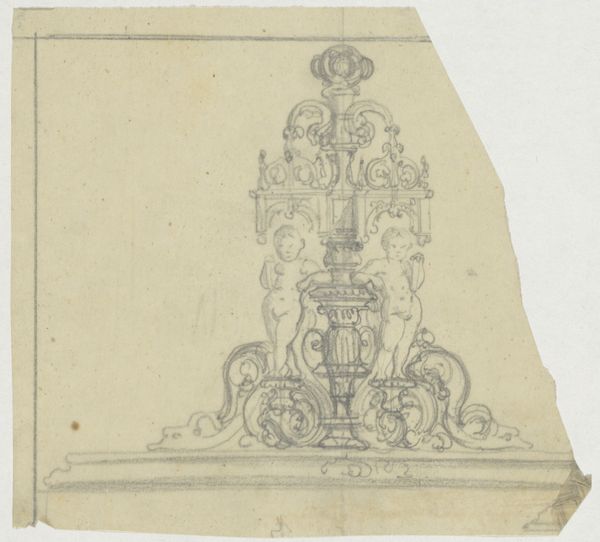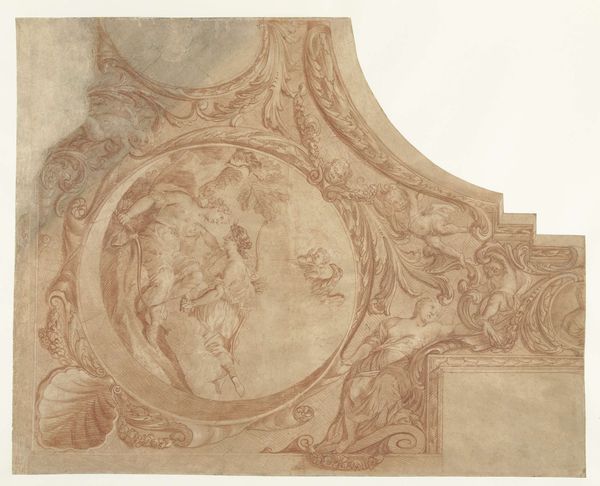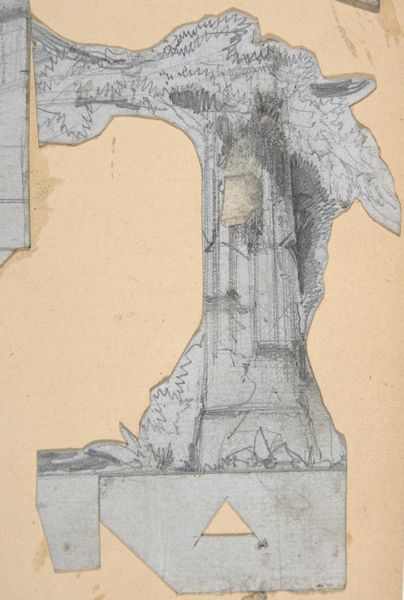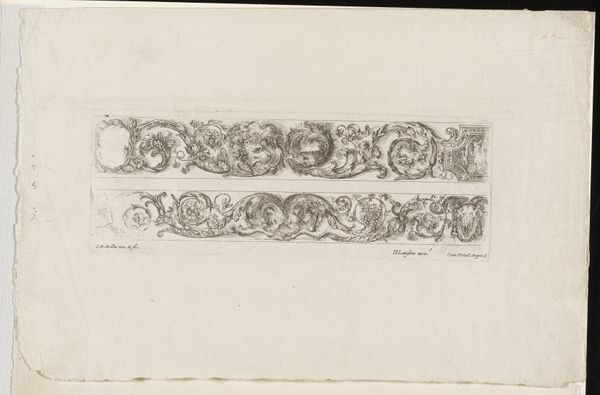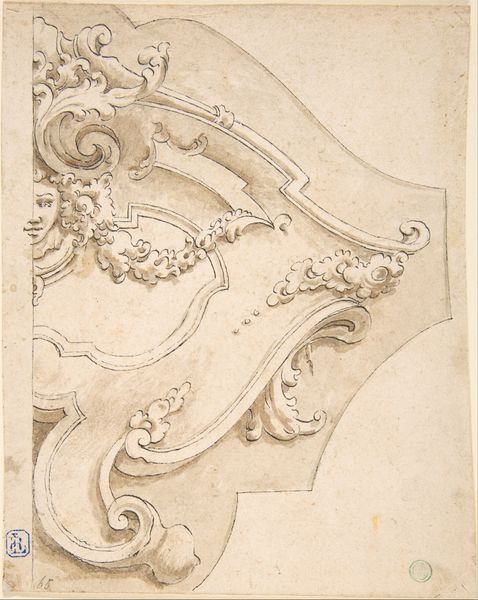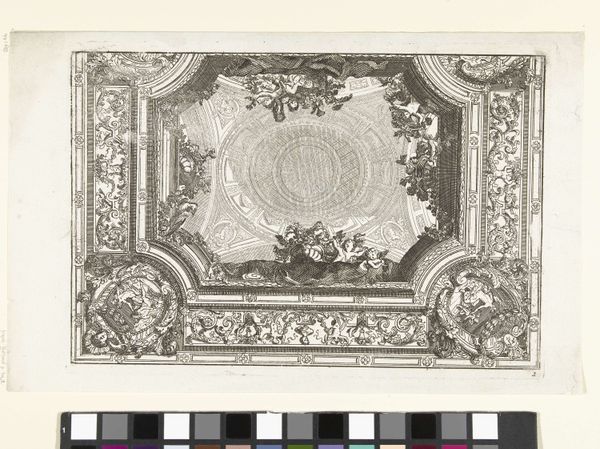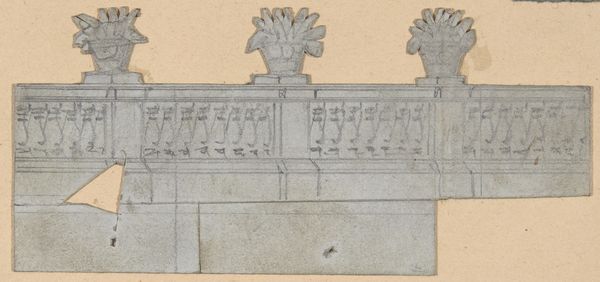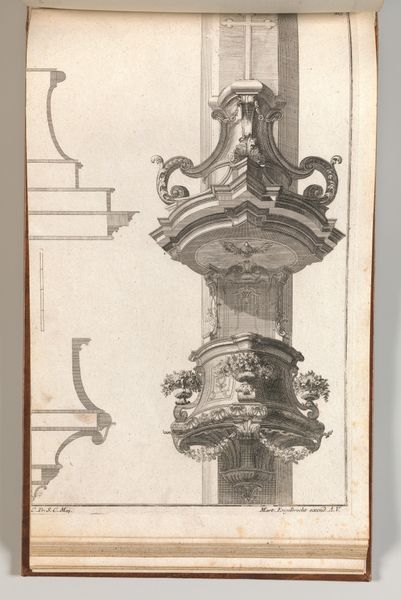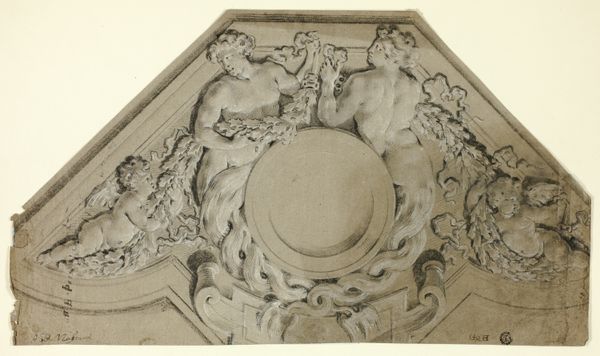
Design for a Stage Set at the Opéra, Paris 1830 - 1890
0:00
0:00
Dimensions: Irregular sheet: 2 1/2 x 2 15/16 in. (6.4 x 7.4 cm)
Copyright: Public Domain
Eugène Cicéri made this design for a stage set at the Opéra in Paris, using graphite on paper. What's fascinating about this modest drawing is how much labor it implies. The rococo forms – cherubic figures, leafy scrolls, and ornate urns – all derive from highly skilled traditions of carving and modeling. Each element would have been fabricated by specialists, and then assembled to create a convincing illusion of opulent surroundings. But of course, the stage is just that: an illusion. This drawing represents not only Cicéri's artistic vision, but also a whole system of production, involving many hands. It reflects a hierarchical approach to the making process, from design to fabrication, with the artist at the top. Consider, too, the social context: opera was a spectacle for the wealthy. This tiny drawing is a portal into the world of 19th century Paris, complete with its class divisions and artistic aspirations.
Comments
No comments
Be the first to comment and join the conversation on the ultimate creative platform.
